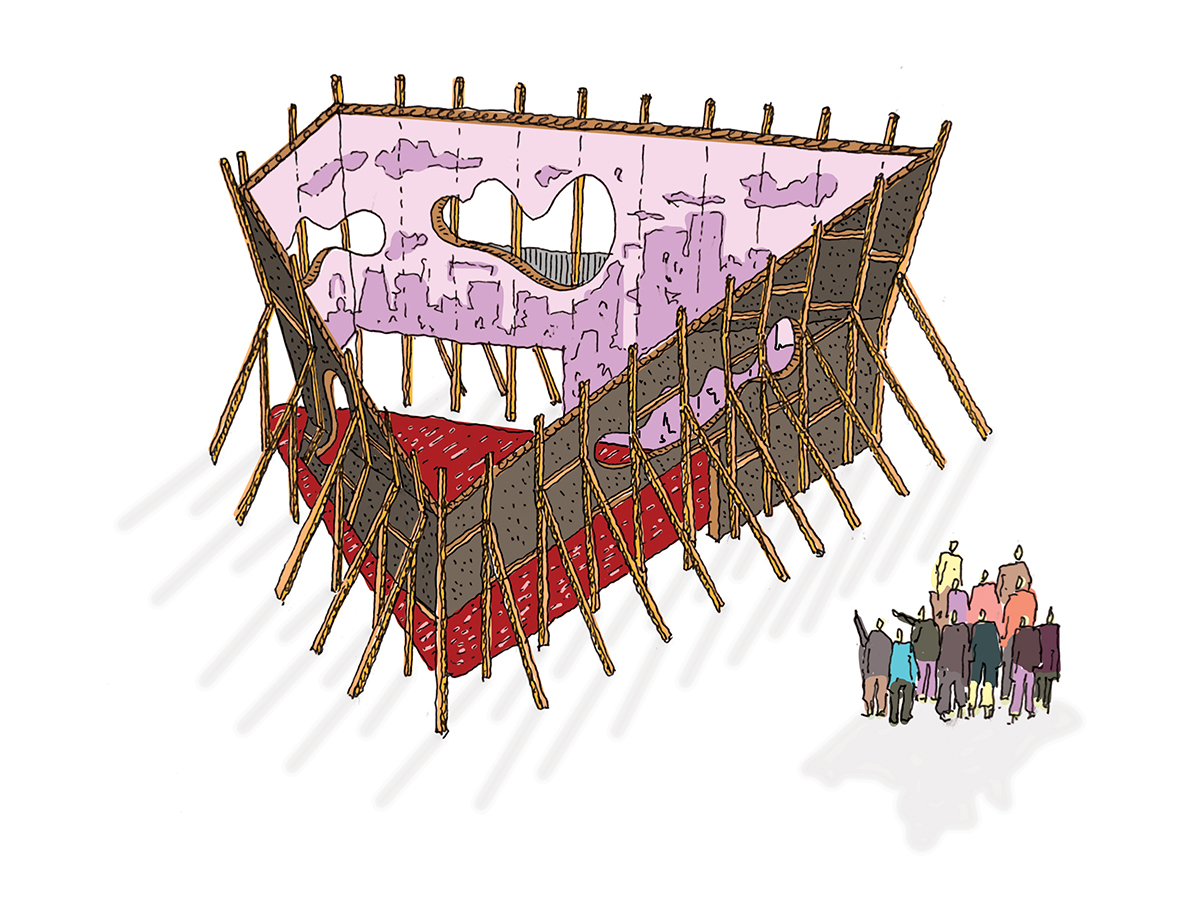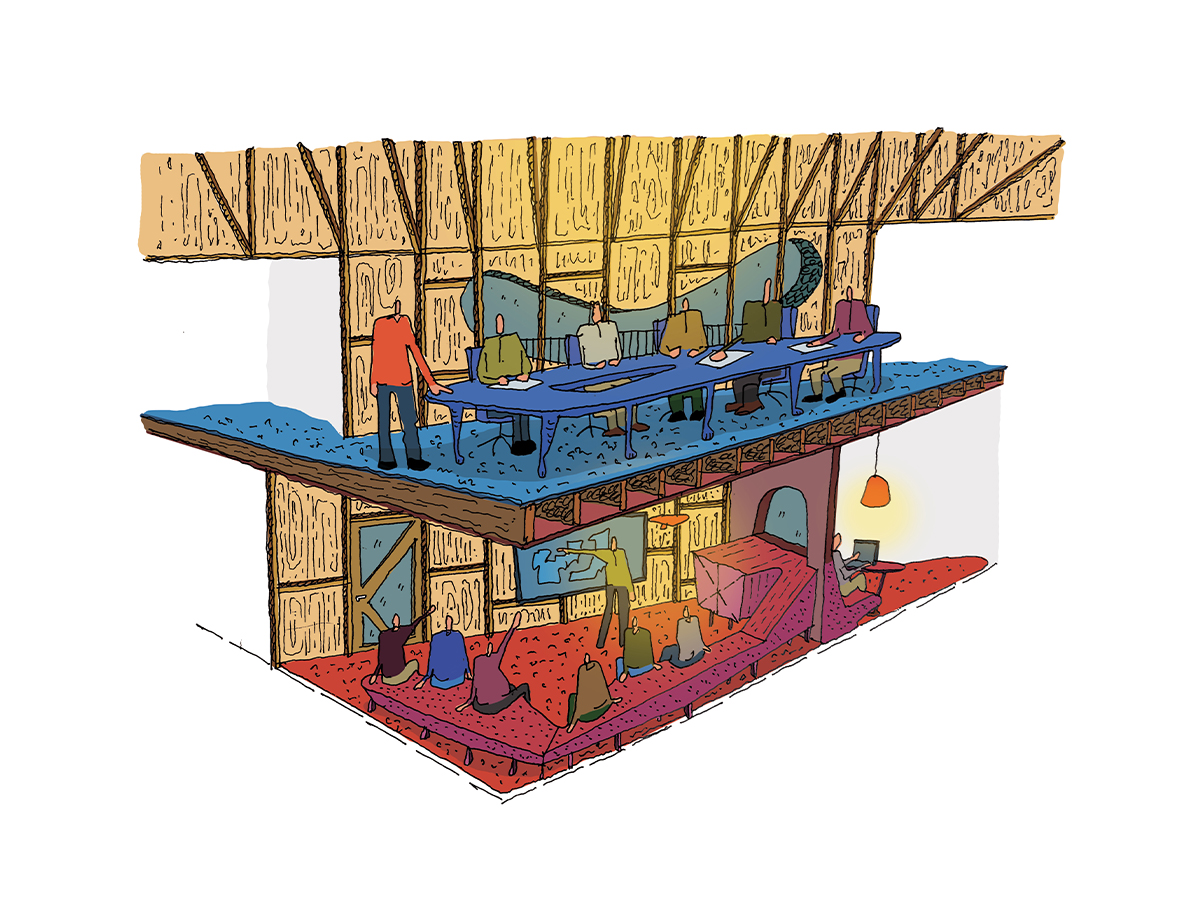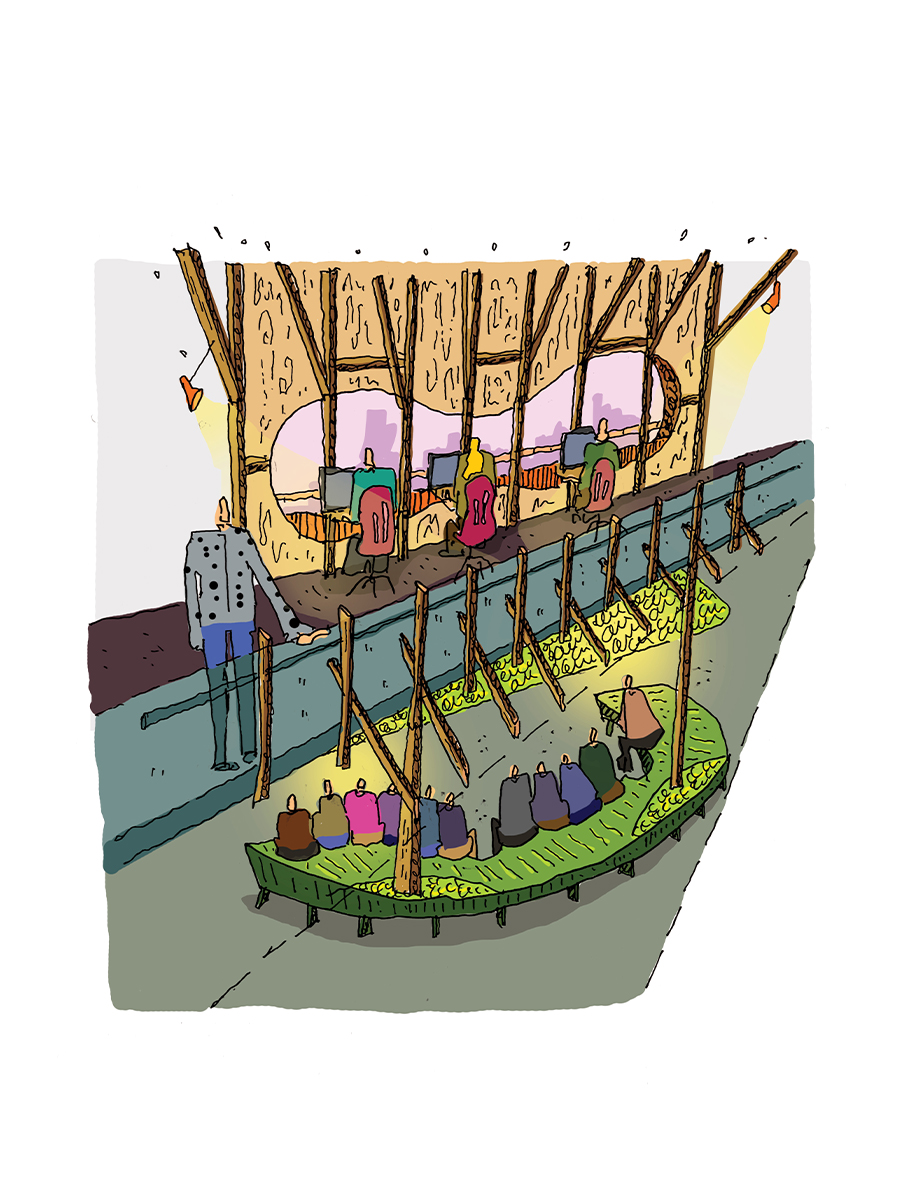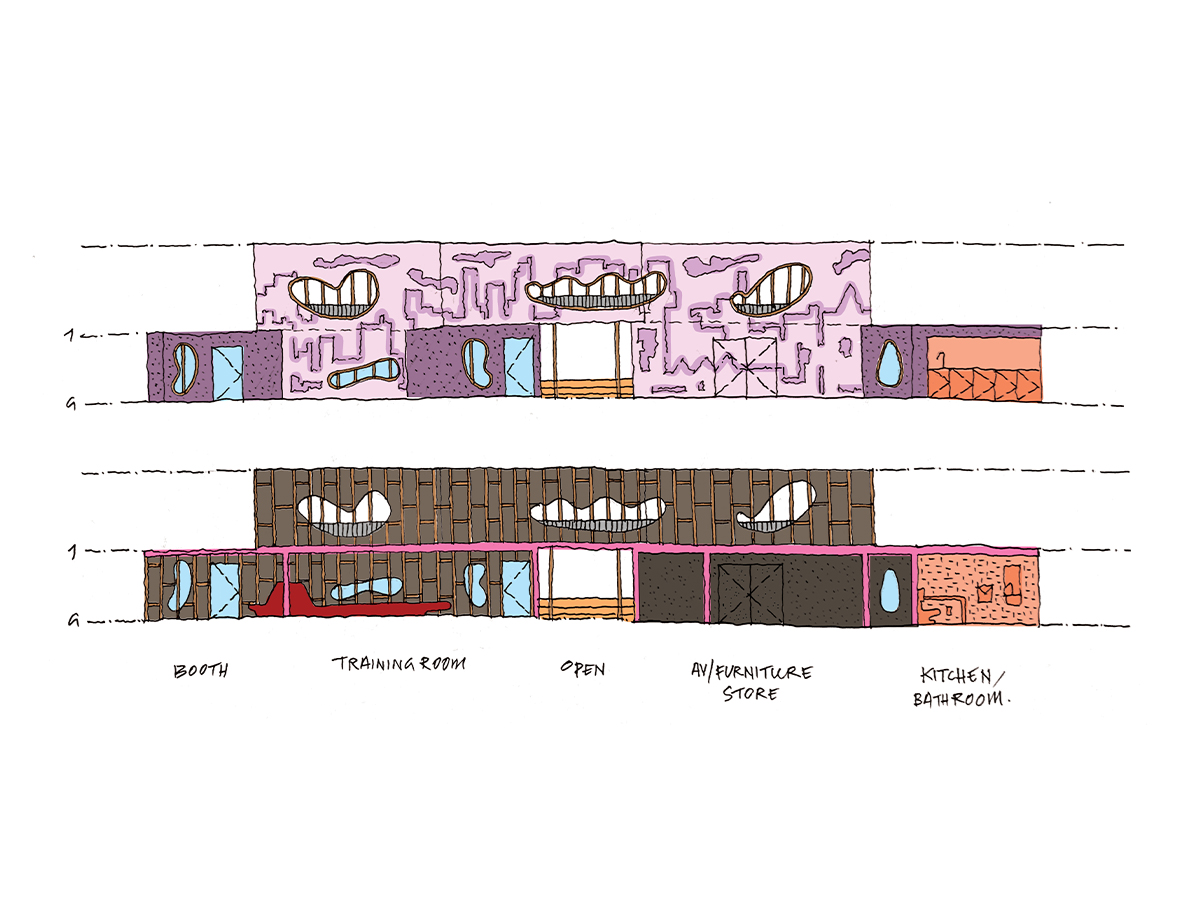
Docklands Innovation & Training Centre
Location
Docklands, Victoria
Traditional Custodians
Wurundjeri people of the Kulin nation
Client
Private Construction Company
Year
2024
Status
Concept Design
Program
Offices, Vocational Training, Collaboration
Area
200 m2 / 2 125 sf

Docklands Innovation & Training Centre
Location
Docklands, Victoria
Traditional Custodians
Wurundjeri people of the Kulin nation
Client
Private Construction Company
Year
2024
Status
Concept Design
Program
Offices, Vocational Training, Collaboration
Area
200 m2 / 2 125 sf
The Docklands Innovation and Training Centre design responds to the needs of a fast growing private construction company, based in inner-city Melbourne. This ‘appendage’ to their general office space provides a project space that enables collaboration between project teams, consultants and clients. An open approach encouraging free-thinking, employee autonomy and innovative company outcomes in a space specifically designed to cater for a variety of usage patterns.
Read More
“Open, public, and flexible space values exploration more than engagement, it begs employees to meet in the open, where they may bump into unexpected people, and allows them to claim spaces and shape them for brainstorming.”1 This thinking underpins the design of this additional company space.
The project centres around a large space for vocational training of 20 staff. Two additional adjacent meeting rooms, upgraded amenities and kitchen facilities, audio-visual and digital support systems and informal ‘hot desk’ stations are arranged around this central training volume.
The design suggests a large-scale artwork mapped onto the surface of the training room interior walls, which is then punctuated and animated with various openings that enable collaboration between spaces and levels.
The space is acoustically treated with various suspended baffles, bringing a softness to the more structured elements.
External to the main training room, the adjacent break-out meeting rooms and passages are made from exposed timber framing, emphasising the temporarily and ‘stage-like’ nature of the centre and suggesting that this is indeed a place for re-invention.
1 - Waber, B. Magnolfi, J & Lindsay, G. ‘Workspaces That Move People’, Harvard Business Review, October 2014.
Read Less








